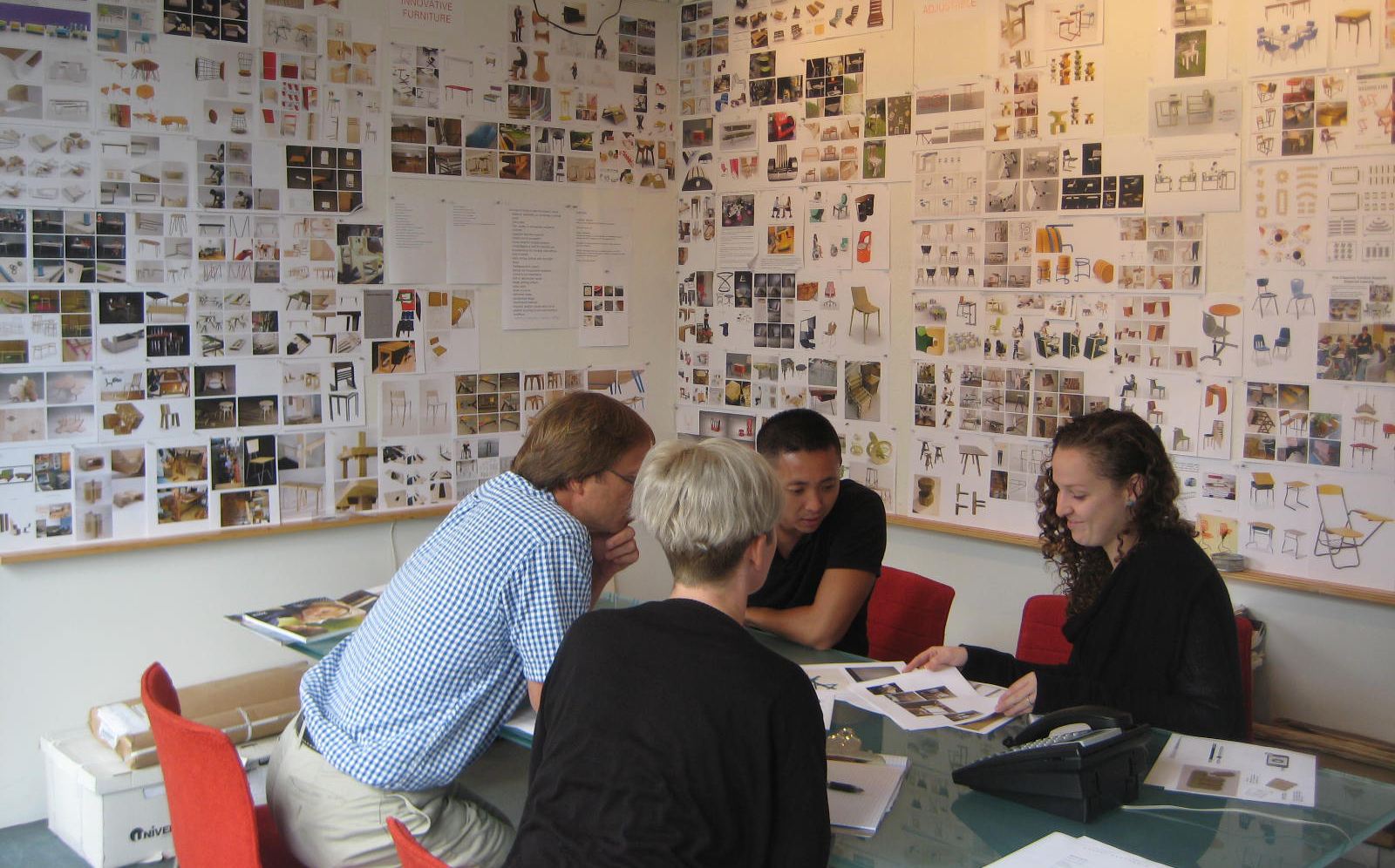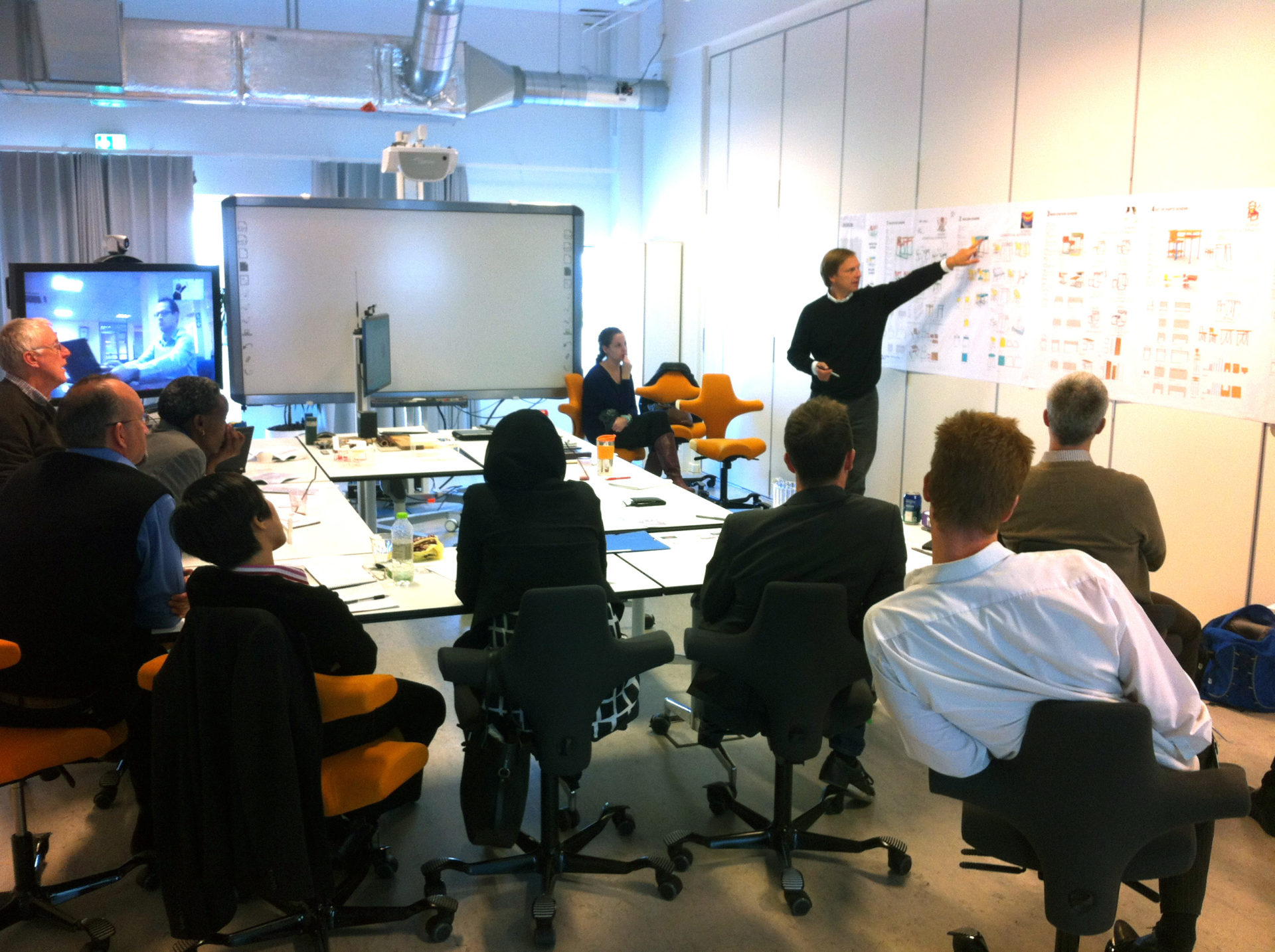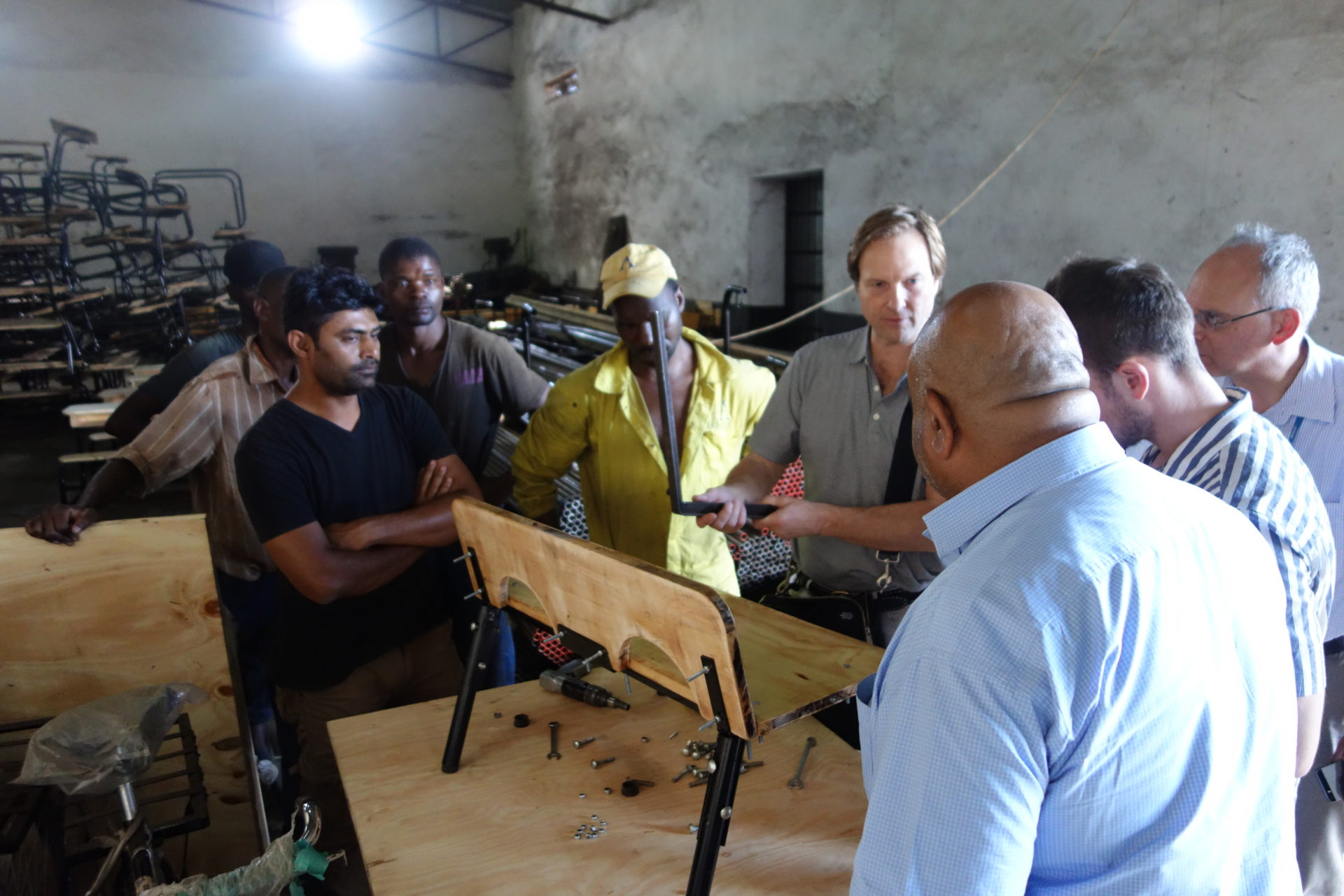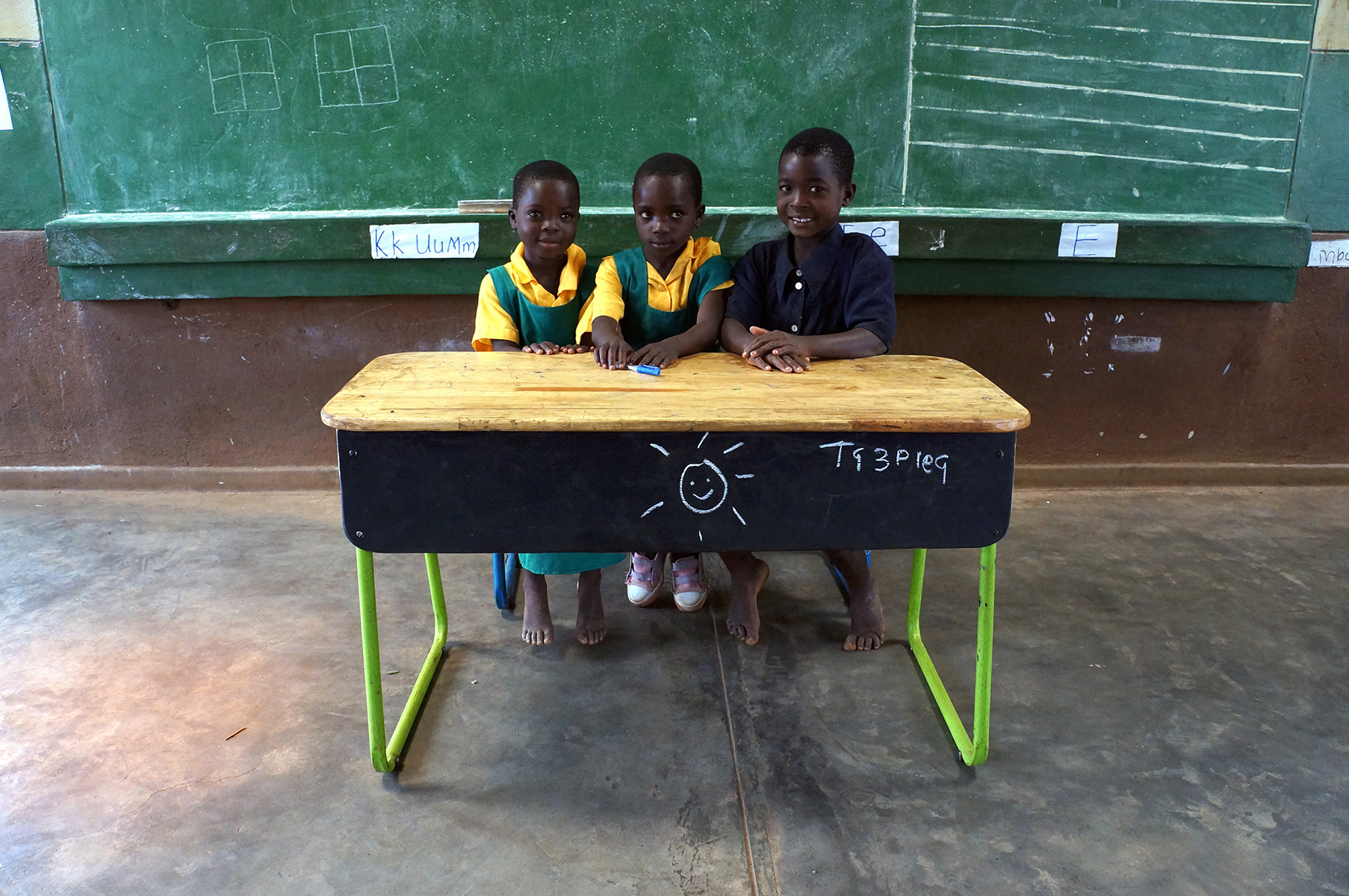Design as a Tool for Social Equity
Design as a Tool for Social Equity: UNICEF and Design for Economy and Utility
by Fiyel Levent
MBB Architects’ collaboration with the UNICEF Innovations Lab led to the design and development of school classroom furniture for Sub-Saharan African countries which could be sourced from local manufactures. This project illustrates the extent to which architects and designers can work on various platforms and meaningfully contribute to social equity, personal dignity, and an enhanced educational experience in places where the needs are tremendous.
Many studies have proven that functional classroom furniture contributes to academic success of children by providing comfort and promoting learning. The experience of learning in an environment where, in some cases, children sit on the floor is challenging. Classroom furniture dignifies the school experience and provides an individualized learning space. Typically, classroom furniture in developing countries has been inadequately designed and manufactured from materials that are not durable or sustainable. Often the classroom furniture is ergonomically flawed and therefore uncomfortable for use throughout the day. This project attempts to correct these shortcomings.

MBB Unicef Team brain storming session.
Equitable Design and Manufacturing of Classroom Furniture
In 2013, UNICEF sent out an internationally circulated request for proposals for the design of various Sub-Saharan countries. Proposed as a kit of parts, the furniture was required to be stored and delivered unassembled in a flat-pack configuration. The furniture would be sized for different age groups, be comfortable to use and portable enough to be movable by students. MBB assembled its team, articulated its vision for the design and was awarded the project. As part of its mission to provide humanitarian aid to children, UNICEF specifies and procures an immense quantity of classroom furniture worldwide for numerous, diverse regions. At the time, they did not have a standardized means for procurement, nor consistent guidelines for design and specifications that could be used in multiple regions. This meant that purchasing and providing classroom furniture for developing nations was an inefficient process that was not suited for local procurement. The aim of this project was to streamline both the design of the furniture and the procedures for its distribution, facilitating the efficient delivery of furniture appropriate for children in that particular region.
The first objective was to design classroom furniture that would be affordable and durable, using sustainable materials and taking advantage of readily available fabrication techniques. The second objective was to define a universal approach and produce management guidelines for overseeing the design of the furniture from planning and procurement, to delivery and maintenance. Because there are numerous regions that UNICEF provides assistance to, and because the classroom furniture had to be constructed from local materials, the entire management process had to be reproducible throughout many countries.

Partner Jeffrey Murphy presenting to The Unicef Team in Copenhagen.
From Universal Ergonomics to Equitable Fabrication
The design process from start to finish lasted approximately a year and a half. During this time, MBB conducted research on universal ergonomics using material from the CDC’s Growth Charts, UNESCO’s research on school furniture dimensions, the World Health Organization’s Child Growth Standards and UNICEF’s Child Friendly School Manual. This information helped the design team to define critical dimensions and design features. The MBB project team leader traveled to both Rwanda and Malawi, toured various fabrication shops and learned about manufacturing techniques and material availability. Numerous internal design charrettes resulted in the fabrication of multiple prototypes. Once prototypes were further developed, the MBB team traveled to the UNICEF Innovations Lab in Copenhagen, to present a range of design approaches. Following this presentation, the UNICEF team identified three designs to further develop.

MBB Unicef Team meeting with local manufactures in Malawi.
Field Testing and Design Modification with Local Manufacturers
As discussions progressed with local manufacturers in Rwanda and Malawi, language barriers proved challenging to convey design intent, and there were differences in the cultures of construction and manufacturing. The design drawings of the tables and the chairs also needed to perform as fabrication drawings, so MBB revised the drawings to serve as full-size templates for building and production. The first prototypes were fabricated and sent out to a rural school in Malawi for field testing. The furniture did not prove to withstand the rigorous demands of the classroom, proving to be structurally unstable and not durable. Based on the field test, MBB modified the design and in particular the way the furniture was bolted together.

Furniture Prototypes, MBB Architects.
Improving and Personalizing Classroom Furniture
The three designs relied on locally produced plywood and steel or wood legs. Pieces of each of the designs were painted various colors of yellows, greens and blues to add an element of playfulness. A chalkboard was integrated onto each desk so that children could write their name on it, personalize the furniture and claim it as their own. A backpack hook was included to hold personal items.
UNICEF now offers this classroom furniture design – with full technical specifications and standards, as an open source platform so that any educational body or individual can use this information to fabricate their own. In some ways, small-scale design projects such as the school classroom furniture project can have a huge impact on par with an architectural project. At MBB this project took on a life of its own and became a true labor of love for the entire office.
As the global pandemic uproots our daily lives and millions of children are forced to study remotely, academic disparities will increasingly rise in developing countries as well as in our very own cities. The repercussions will be staggering, not only for students but for their families and all our extended communities.

Classroom furniture prototypes for deployment in Sub-Saharan schools in Africa through a partnership with UNICEF
Planning and Design for Social Equity
As architects and designers, we must ask ourselves: How can we contribute and share our planning and design skills? What large-scale organizations, institutions and humanitarian efforts can we partner with? What universal, open source solutions can we invent so that students can continue to learn safely and comfortably, regardless of location or affluence. As architects and designers, we have the ability to affect real change even with the smallest of projects.